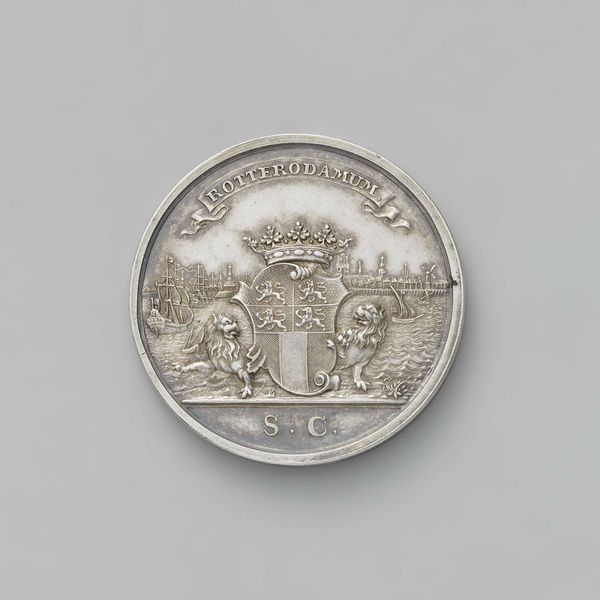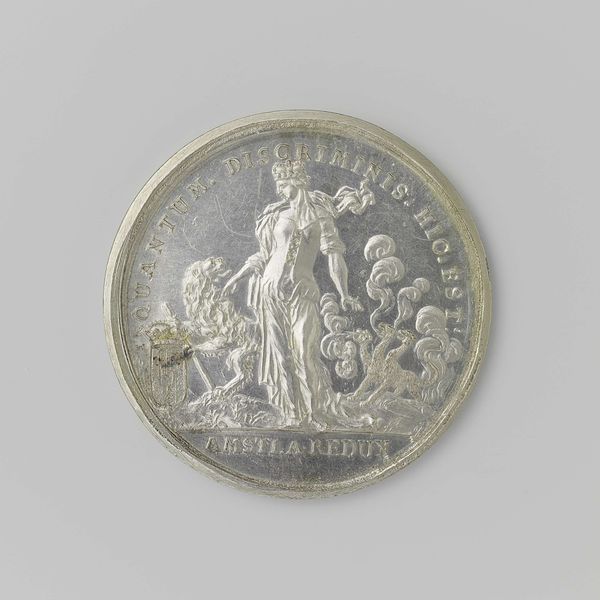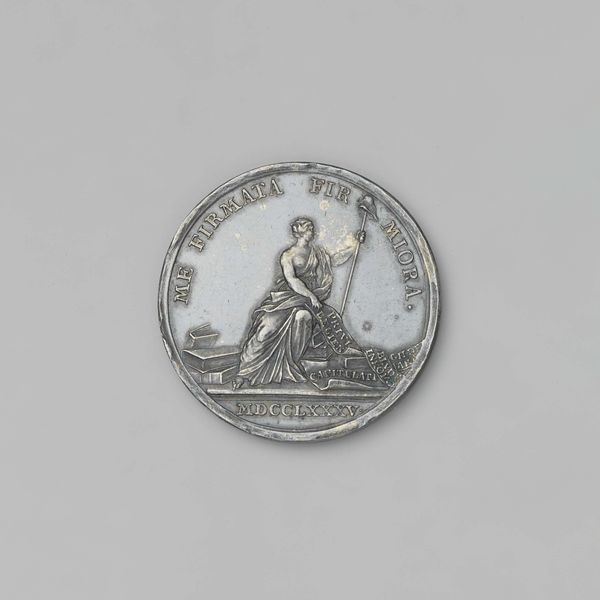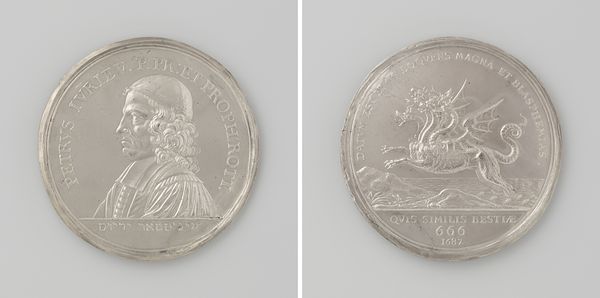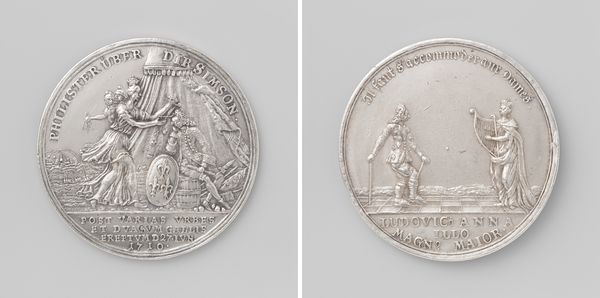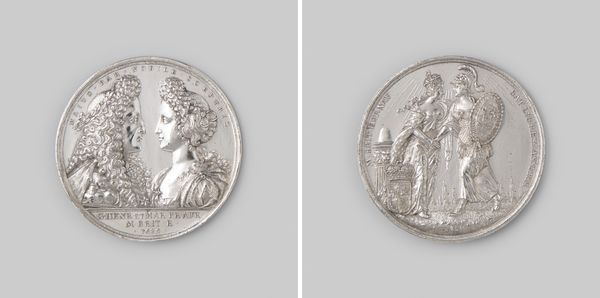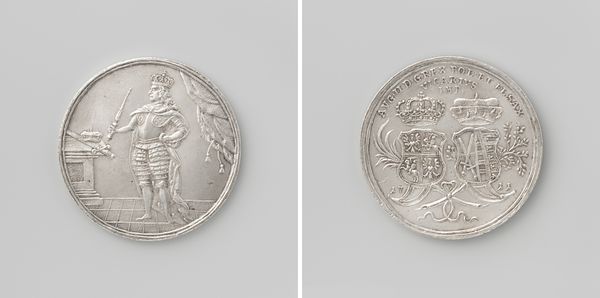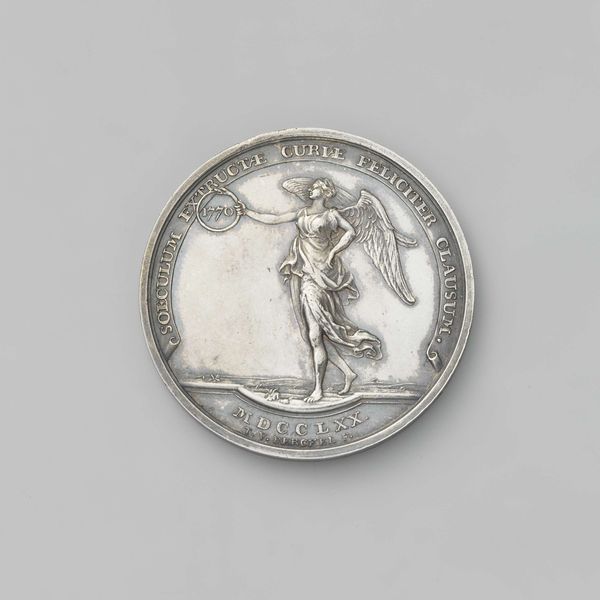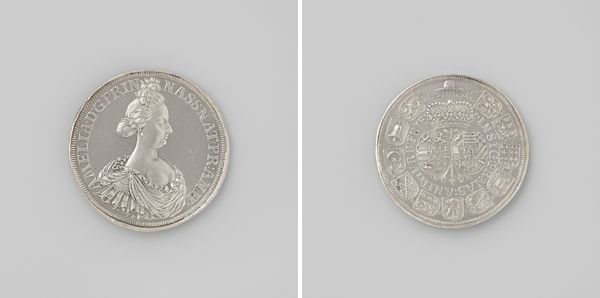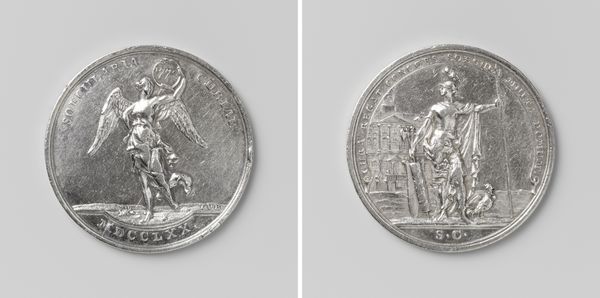
Verheffing van de prins van Oranje tot stadhouder door de Staten van Zeeland 1747
0:00
0:00
metal, relief, engraving
#
portrait
#
allegory
#
baroque
#
metal
#
relief
#
coin
#
engraving
Dimensions: diameter 4.5 cm, weight 31.2 gr
Copyright: Rijks Museum: Open Domain
Editor: This impressive coin, “Verheffing van de prins van Oranje tot stadhouder door de Staten van Zeeland,” made of metal by Martin Holtzhey in 1747, has a striking allegorical scene in relief. The execution feels precise and somehow...powerful for such a small object. What should we make of it? Curator: Well, looking at this from a materialist perspective, it's crucial to consider the role of coins like this. They're not just currency, but meticulously crafted objects loaded with political messaging. Notice the figure – likely a representation of Zeeland itself – brandishing a sword, along with other symbolic artifacts around. What was the economic state of affairs when this was produced? Editor: Good point. Thinking of 1747... that’s during the War of the Austrian Succession. This piece could speak to specific manufacturing challenges that are embedded within this object and/or materials. Do you think it’s communicating something about the war effort and economy, or perhaps some colonial holdings and related activities, at the time? Curator: Precisely. Coins are a potent nexus of politics, economics, and artistic expression. They are indicative of consumption and, more importantly, perhaps an intentional move in a power play using propaganda. Given the baroque style and the relief engraving technique, it would be interesting to explore how similar coins or medallions circulated and were exchanged – gifted perhaps. This helps contextualize the Prince of Orange's elevation, perhaps speaking to an urgency around his rise. What sort of labor practices or specialized tools might have been required? Editor: That adds another layer. So, it's not just about what the coin depicts, but how its very existence, its material reality, played a role in shaping public perception and power dynamics during a turbulent time. The coin itself becomes part of the historical narrative. Curator: Absolutely. Considering this coin shifts the focus from mere aesthetic appreciation to understanding its function as a manufactured object deeply embedded within the political and social fabric of its time. Editor: Thanks, this reframes how I’ll examine historical art moving forward, focusing on the context and how materials can tell us even more than we expected.
Comments
No comments
Be the first to comment and join the conversation on the ultimate creative platform.
